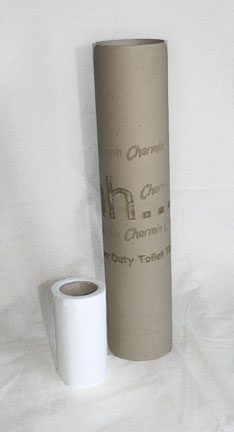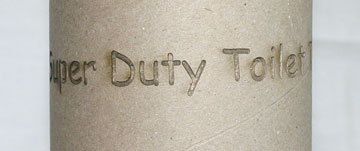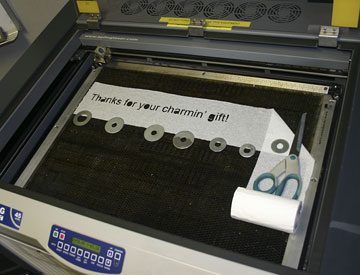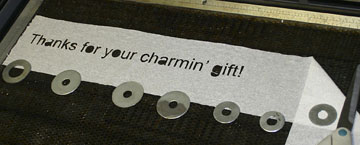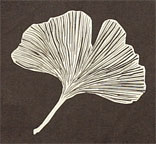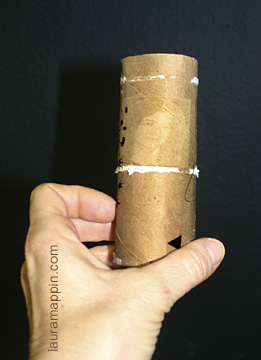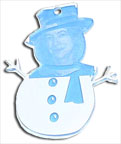common practice with glass is to mark it with raster art to "etch" it. that gives a pretty clean line. but in a lot of materials, a vector line done with very cool settings can give an even cleaner line. but vector work can be hotter so you gotta start much cooler and be concerned about cracking the glass.
so I tried. my first several attempts didn't mark the glass at all or else were just enough to burn off the finger print oil. good - at least I had room to work.
the vector lines came out looking terrible, like I'd tried to lay down a bead of glue with an unsteady hand. I'd never seen glass look like that so I salivated to enlist my closeup lens.
below is a closeup of glass affected by vector and raster artwork. left to right: etched "m", two very close vector lines, two more very close vector lines, good looking raster line, followed by three different vector lines.
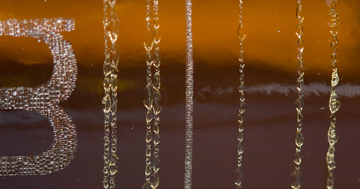
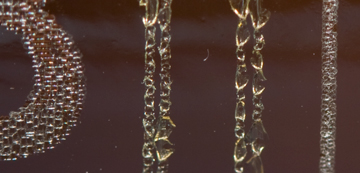
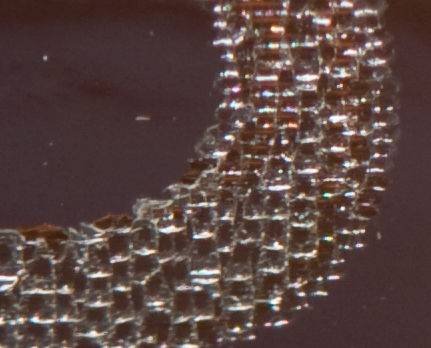
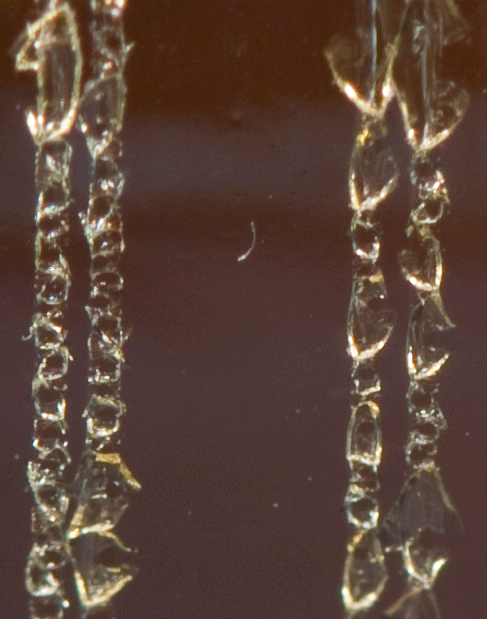 5
5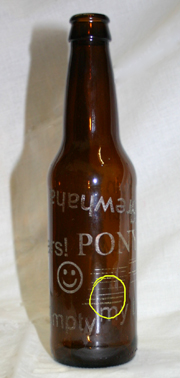
and after all that, the raster line retained its regal position of making the best line in glass.
in case you've ever wanted to know, the Epilog will interpret any vector outline thinner than 0.5 pt as vector. 0.5 point is the smallest thickness that can be treated as raster. and I know some of you are going to ask what's the difference between a hairline specified vector and, say, one specified at .3? probably nothing.
